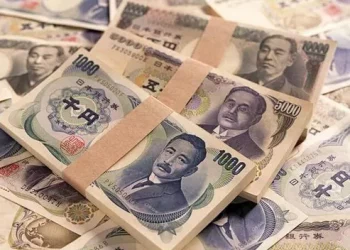1. It can be divided into Official Rate and Market Rate according to the degree of tightness.
(1) Official exchange rate (legal exchange rate) : This exchange rate mainly refers to the exchange rate set by the official (such as the Ministry of Finance, the central bank or the designated specialized bank).
In countries with strict exchange controls that prohibit the existence of free markets, the official exchange rate is, and there is no market exchange rate.
(2) Market exchange rate: It refers to the actual exchange rate at which foreign exchange is freely traded.
In countries with relatively loose exchange control, the official exchange rate is usually only a formality, with prices and no market, and the actual exchange rate is adopted at the market rate.
2. According to the nature and use of foreign exchange funds, it can be divided into Commercial Rate and Financial Rate.
(1) Trade exchange rate: It mainly refers to the exchange rate used for import and export trade and dependent costs.
(2) Financial exchange rate: it mainly refers to the exchange rate of capital transfer and tourism.
3. According to whether the exchange Rate is applicable to different sources and uses, it can be divided into Single Rate and Multiple Rate—- Multiple exchange Rate or Multiple exchange Rate.
(1) Single exchange rate: where a country has only one foreign exchange rate, receipts and payments from different sources and uses are calculated according to this, which is called a single exchange rate.
(2) Multiple exchange rates: a country has two or more kinds of exchange rates for a foreign currency due to different uses and types of transactions, which is called multiple exchange rates, also called complex exchange rates.
4, according to the foreign exchange trading tools and payment time to divide, can be divided into: (1) telegraphic transfer Rate (T/T Rate) : by telegraph or telex notice payment, called telegraphic transfer Rate.
Time OF EXCHANGE RATE OF TELEGRAPHIC TRANSFER IS THE FASTEST, GENERAL BANK CANNOT TAKE UP CUSTOMER CAPITAL, BECAUSE THIS TELEGRAPHIC TRANSFER EXCHANGE RATE IS THE MOST EXPENSIVE.
The sale price in the above refers to the telegraphic transfer rate.
The telegraphic exchange rate is the basis for calculating various other exchange rates.
(2) M/T Rate: the foreign exchange Rate at which payment is notified by letter.
Since AIRMAIL TAKES LONGER THAN CABLE OR TELEX ADVICE, THE BANK CAN HOLD THE CUSTOMER’S FUNDS FOR A certain period of time, SO THE EXCHANGE RATE FOR M/T IS lower THAN THAT FOR T/T.
(3) D/D Rate: The exchange Rate adopted in the exchange of various foreign exchange bills, checks and other bills is called D/D Rate.
May also be included in this column.
Since D/D is divided into sight rate and forward rate in terms of maturity, the exchange rate is further divided into sight rate and forward rate. The latter rate shall be deducted from the sight rate of D/D.
(4) Forward Rate: Forward Rate refers to the price agreed in advance for delivery on a future day.
5. By buyers and sellers: (1) Inter-bank Rate: refers to the exchange Rate used in foreign exchange transactions between banks, that is, the exchange Rate in the foreign exchange market.
(2) Commercial Rate: refers to the exchange Rate of foreign exchange between banks and merchants.
6. Divided by the delivery period of foreign exchange transactions: Divided by the delivery period of foreign exchange transactions, the exchange rate can be divided into and forward exchange rate.
The so-called delivery refers to the performance of the transaction contract between the buyer and the seller, and the transfer of money and goods.
The delivery of foreign exchange transactions refers to the purchase of domestic currency, the seller of foreign exchange to pay foreign exchange behavior.
Because the delivery date is different, the exchange rate is different.
(1) Spot exchange rate, also known as exchange rate, is the exchange rate used by the buyer and seller to handle foreign exchange delivery within two business days after the transaction.
(2) Forward exchange rate, also known as forward exchange rate, is the exchange rate agreed by the buyer and seller in advance, according to which the delivery of foreign exchange will be carried out at a certain date in the future.



























